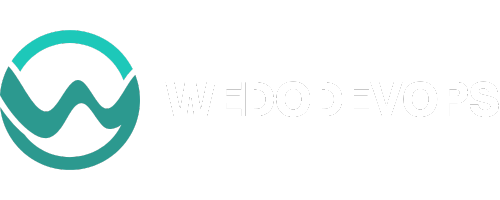DevOps is a software development methodology that aims to improve the speed and quality of software delivery by fostering collaboration and communication between development and operations teams. It is a culture that emphasizes automation, continuous integration, and continuous deployment, among other practices, to streamline the software development lifecycle.
As organizations increasingly rely on software to drive their business operations, DevOps has become an essential framework for achieving faster time-to-market, improved customer satisfaction, and greater business agility.
This article provides a beginner’s guide to understanding the tools and processes of DevOps. It explores the challenges faced by development and operations teams, the objectives and problems addressed by DevOps, and the common practices and principles of this culture. It also examines the skills and roles required for a DevOps engineer and the popular tools and processes used in a DevOps team.
By the end of this article, readers will have a better understanding of the tools and techniques used in DevOps and will be better equipped to adopt this methodology in their own organizations.

What Is DevOps?
The concept of DevOps is crucial for understanding the tools and practices that are commonly used in software development today. DevOps is a process framework that ensures collaboration between development teams and operations teams. This framework aims to increase the speed of delivering applications and services by automating all processes, from build to deployment.
DevOps culture is based on the agile methodology, which supports breaking down larger codebases into smaller, more manageable chunks. It complements agile but is uniquely differentiated from traditional IT operations. Continuous release and deployment is a major practice in DevOps. Automation plays a key role in ensuring software is released repeatably and reliably.
For beginners, understanding the tools of DevOps is essential. DevOps practices have enhanced the collaboration between the development team and operations teams, and this has led to productivity, quality, and faster deployments.
Learning a programming language is mandatory in the DevOps journey, and popular back-end languages to start with include Python, Ruby, JavaScript, Go, and Java. Understanding the fundamentals of operating systems, terminal and shell scripting, and networking concepts is also crucial. Cloud knowledge is necessary for DevOps engineers, with AWS holding the highest cloud computing market share. Finally, certification in Docker, Kubernetes, AWS, Azure, and Udacity can help in the DevOps journey.

The Benefits Of Adopting DevOps
Adopting and implementing DevOps practices can lead to increased productivity, faster deployments, and a culture of collaboration among development, operations, and business teams. By automating processes, DevOps promotes efficiency and reduces errors that can arise when tasks are performed manually.
Automated deployment ensures that software is released repeatably and reliably, while continuous integration facilitates frequent code integrations and automatic builds.
Infrastructure as code is another DevOps practice that helps organizations manage their infrastructure and applications more effectively. It involves treating infrastructure as software, which can be versioned, tested, and deployed using the same processes as application code. This enables organizations to rapidly provision and manage infrastructure through code, reducing the risk of errors and ensuring consistency across environments.
DevOps practices help organizations achieve faster software delivery by focusing on continuous feedback and optimization. By monitoring and measuring the performance of applications and services, teams can identify areas for improvement and make changes more rapidly. This helps organizations deliver higher-quality software at a faster pace, which can be critical in today’s competitive market.

The Role Of Automation In DevOps
Automation is an essential component of the DevOps framework, serving as the ‘glue’ that connects development and operations teams to streamline processes and enhance productivity. Automating processes such as testing, deployment, and infrastructure monitoring allows for more efficient and reliable software releases. With the use of automation tools, DevOps teams can ensure that each release is thoroughly tested and deployed seamlessly, reducing the risk of errors or downtime.
One significant aspect of automation in DevOps is automated testing. Automated testing tools help to ensure that each new release is thoroughly tested and free of errors. This helps to reduce the time spent on manual testing and allows developers to focus on creating new features and fixing bugs. Additionally, automated testing can be conducted on a regular basis, ensuring that any issues are caught and resolved quickly.
Another critical aspect of automation in DevOps is version control. Version control tools allow developers to manage changes to their codebase, ensuring that each version is tracked, backed up, and easily restorable. This helps to reduce the risk of errors or data loss, as well as making it easier to collaborate on projects with other team members. With version control, developers can work on different branches of the codebase, test changes, and merge them seamlessly into the main codebase for deployment.
Automation plays a crucial role in DevOps, helping to streamline processes, reduce errors, and enhance productivity. Automated testing and version control are just two examples of how automation can benefit DevOps teams. Other aspects of automation, such as continuous deployment and infrastructure monitoring, can also help to ensure that releases are seamless and reliable.
With the use of automation tools, DevOps teams can achieve faster and more efficient software releases, ultimately leading to higher customer satisfaction.

Continuous Integration And Continuous Deployment
Continuous Integration and Continuous Deployment (CI/CD) is a fundamental practice in DevOps that helps teams deliver software more efficiently and with higher quality.
Continuous Integration (CI) is a used development process that involves regularly merging code changes into a central repository, which helps teams catch integration issues early on. This practice ensures that the codebase is always in a working state and helps reduce the time taken to identify and resolve issues.
Continuous Deployment (CD), on the other hand, refers to the process of automatically deploying changes to production after they have passed through the CI pipeline. This practice ensures that changes are delivered to users as soon as they are ready, which can reduce the time-to-market and increase deployment frequency.
Continuous Monitoring is also an essential component of the CI/CD process, as it provides teams with real-time feedback on the key performance indicators of their software.
To deploy software using a DevOps pipeline, teams need to automate as many tasks as possible. This includes building, testing, and deploying code changes. By automating these tasks, teams deploying software often can reduce errors, improve quality, and free up developers to focus on more challenging tasks.
The CI/CD pipeline also enables the dev and ops teams to identify and fix issues quickly, which can help to reduce costs and improve customer satisfaction. Overall, the use of CI/CD is a critical component of a successful DevOps strategy.

Configuration Management With Tools Like Ansible And Puppet
Configuration management is an essential aspect of DevOps, and tools such as Ansible and Puppet are commonly used to manage and automate the configuration of servers and other infrastructure resources. Ansible and Puppet are both open-source tools that allow the configuration of infrastructure resources to be automated, thus reducing the potential for human error and saving time. These tools are used in conjunction with other DevOps practices and workflows to enable the rapid and efficient delivery of software.
Ansible is a popular choice for configuration management due to its agentless architecture, which makes it easy to set up and use. Ansible uses YAML files to define the desired state of infrastructure resources and applies those changes in a consistent and repeatable manner. It also has a large and active community, which means that there is a wealth of knowledge and support available for those using the tool.
Puppet is another widely used configuration management tool that uses a declarative approach to infrastructure configuration. Puppet uses a domain-specific language to describe the desired state of infrastructure resources and then applies those changes to bring the resources into that desired state. Like Ansible, Puppet also has a large and active community and is used by many organizations to manage their infrastructure resources.
By using tools such as Ansible and Puppet, DevOps teams can automate the configuration of infrastructure resources, enabling them to focus on other aspects of software delivery and reducing the potential for human error.

Containerization With Docker And Kubernetes
Moving on from configuration management, another important aspect of DevOps is containerization. Containerization is the process of packaging an application and its dependencies into a single container that can run consistently across different environments. This allows for greater portability and flexibility in software development and deployment.
Two popular tools for containerization in DevOps are Docker and Kubernetes. Docker is a platform that allows developers to build, ship, and run applications in containers. It provides a standardized way to package applications and their dependencies, making it easier to deploy and manage them across different environments. Docker also allows for greater efficiency in resource utilization, as multiple containers can run on a single host machine.
Kubernetes, on the other hand, is a container orchestration platform that automates the deployment, scaling, and management of containerized applications. It provides a way to manage multiple containers across multiple hosts, ensuring that applications are always available and running smoothly. Kubernetes also allows for easy scaling of applications, as it can automatically adjust the number of containers based on demand.
Overall, containerization with tools like Docker and Kubernetes is an important aspect of DevOps that allows for greater flexibility, portability, and efficiency in software development and deployment.

Monitoring And Logging With Tools Like Nagios And ELK Stack
Monitoring and logging are crucial aspects of DevOps, and tools like Nagios and the ELK stack provide a comprehensive solution for tracking system performance and detecting issues like a hawk spotting its prey.
Nagios is a monitoring tool that helps DevOps teams monitor their systems and networks. Its powerful monitoring capabilities enable users to detect and resolve issues before they escalate. Nagios can monitor a wide range of services and applications, and it sends alerts when it detects any issues.
The ELK stack, which stands for Elasticsearch, Logstash, and Kibana, is a popular logging tool used in DevOps pipelines. It is designed to provide continuous feedback on the performance and health of a production environment. Elasticsearch is a search engine that provides a platform for storing and analyzing large volumes of data. Logstash is a tool that collects and processes logs from various sources, such as servers and applications. Kibana is a data visualization tool that provides a user-friendly interface for monitoring and analyzing logs. The ELK stack is highly scalable, and it can be used to monitor and analyze logs from hundreds of servers.
Monitoring and logging are crucial for maintaining the performance and health of a production environment. DevOps teams can leverage tools like Nagios and the ELK stack to monitor their systems and networks and detect issues before they escalate. These monitoring tools provide continuous feedback and help DevOps teams maintain high levels of uptime and availability.
The ELK stack is particularly useful for analyzing and visualizing logs, enabling DevOps teams to gain insights into system performance and quickly identify and resolve issues.

Collaboration And Communication With Tools Like Slack And Jira
Collaboration and communication are essential components of successful DevOps practices, and tools like Slack and Jira provide a seamless platform for team members to share information, track progress, and resolve issues efficiently.
Slack is a messaging platform that allows team members to communicate in real time, share files, and collaborate on tasks. Slack also integrates with other tools commonly used in DevOps such as Jenkins, GitHub, and Trello, allowing for a more streamlined workflow.
Jira is a project management tool that enables teams to plan, track, and manage their work. It provides a centralized platform for team members to collaborate on tasks, track progress, and resolve issues. Jira also integrates with other tools such as GitHub, Bamboo, and Bitbucket, allowing for a more seamless workflow. With Jira, teams can create custom workflows, set priorities, and assign tasks to team members, ensuring that everyone is on the same page.
Using collaboration and communication tools like Slack and Jira can help DevOps teams work more efficiently and effectively. By providing a centralized platform for team members to communicate, share information, and manage tasks, these tools can help reduce errors, improve collaboration, and increase productivity.
As the DevOps industry continues to grow in popularity, collaboration and communication tools will continue to play an important role in helping teams achieve their goals.

DevOps Best Practices
Implementing best practices is crucial for the successful adoption and implementation of DevOps in organizations. These best practices involve the use of various tools that are essential in facilitating collaboration, automation, testing, and monitoring.
The following are some of the best practices that organizations can implement to ensure they maximize the benefits of DevOps:
Build Tools: Organizations can use build tools such as Jenkins, Bamboo, and TravisCI to automate their build processes. These tools enable developers to build and test their code automatically, reducing the time it takes to get feedback and detect errors. By automating the build process, organizations can also ensure that their code is always in a deployable state.
Continuous Testing: DevOps practices emphasize the importance of continuous testing throughout the software development lifecycle. Organizations can use tools like Selenium, JUnit, and TestNG to automate their testing processes. These tools enable developers to write automated tests that can be run repeatedly, ensuring that the code is always functioning as expected.
Monitoring: DevOps practices involve continuous monitoring of the software system to detect issues and identify areas that need improvement. Organizations can use tools like Prometheus, Grafana, and New Relic to monitor their systems and analyze data. These tools enable organizations to identify and address issues before they become critical, ensuring that their systems are always performing optimally.
By implementing these DevOps best practices, organizations can improve their software development processes and achieve faster time to market while ensuring high-quality software. These practices help maintain a culture of collaboration, automation, and continuous improvement, which are essential for the success of any DevOps initiative.

Choosing The Right DevOps Tools For Your Organisation
In the previous subtopic, we explored the best practices in DevOps, which include continuous planning, collaborative development, continuous integration, and continuous testing. These practices are crucial to the success of DevOps, as they ensure that all teams are working together to deliver high-quality solutions at a swift pace.
However, to effectively implement these practices, it is essential to choose the right DevOps tools for your organisation. Choosing the right DevOps tools can be challenging, as there are a plethora of DevOps technologies available in the market.
It is essential to choose tools that align with your organisation’s needs, goals, and existing infrastructure. Some factors to consider when choosing DevOps tools include the level of automation required, the scalability of the tools, the integration capabilities with other systems, and the level of support provided.
It is also crucial to evaluate the DevOps processes and workflows in your organisation before selecting tools. This evaluation will help identify the areas that need improvement, which will guide the choice of tools.
Additionally, it is essential to involve all stakeholders, including software developers, operations teams, and business teams, in the selection process to ensure that everyone’s needs are considered.
By choosing the right DevOps tools, your organisation can streamline its processes, reduce costs, and improve the quality of its software delivery.
Conclusion
DevOps is a powerful process framework that helps organizations increase the speed of delivering applications and services. It enables collaboration and automation throughout the software development lifecycle by bridging the gap between development and operations teams. The benefits of adopting DevOps are numerous, including faster time to market, improved software quality, and increased customer satisfaction.
Automation is a crucial aspect of DevOps, allowing teams to streamline processes, reduce errors, and increase efficiency.
Continuous integration and continuous deployment are key components of DevOps, allowing teams to deliver software quickly and reliably. Configuration management tools like Ansible and Puppet help teams manage infrastructure and reduce the risk of configuration drift. Monitoring and logging tools like Nagios and ELK Stack enable teams to identify and resolve issues quickly, improving overall system availability. Collaboration and communication tools like Slack and Jira help teams keep track of projects and stay in constant communication.
In conclusion, DevOps is a powerful process framework that can help organizations achieve their goals of faster time to market, improved quality, and increased customer satisfaction. According to a recent survey, organizations that adopt DevOps practices experience 63% fewer failures and recover 168 times faster from failures.
By adopting DevOps best practices and choosing the right tools for their organization, teams can improve efficiency, reduce errors, and deliver software faster and more reliably.
Frequently Asked Questions
What Are Some Common Challenges Faced By Organizations During The Adoption Of DevOps?
Organizations adopting DevOps may face challenges such as resistance to change, lack of collaboration, difficulty in automating processes, and inconsistent tooling. These challenges can be overcome through proper training, clear communication, and a strong DevOps culture.
How Does DevOps Differ From Traditional IT Operations Methodologies?
DevOps differs from traditional IT operations methodologies in its emphasis on collaboration between development and operations teams, automation of all processes, continuous-release, software testing and deployment, and a culture of agility and rapid iteration. It addresses problems such as the isolation of development and operation teams, manual code deployment, and long release cycles.
What Are Some Key Skills And Roles Required For A Successful DevOps Engineer?
Key skills for a successful DevOps engineer include programming and network/cloud infrastructure knowledge, operating system fundamentals, familiarity with networking concepts, and cloud computing expertise. The role involves planning, development, deployment, quality assurance, security compliance, and effective collaboration. Certification in relevant tools like Docker, Kubernetes, AWS, Azure, and Udacity can also be helpful.
How Can DevOps Help Organizations Achieve Faster Deployment Speeds And Higher-Quality Software?
DevOps can help organizations achieve faster deployment speeds and higher quality software by promoting collaboration between development and operations teams, automating processes, incorporating continuous planning and testing, and amplifying feedback loops. It also addresses problems of isolation, excessive testing time, and errors in production.
What Are Some Common Monitoring And Logging Tools Used In DevOps?
Common monitoring and logging tools in DevOps include Prometheus, Grafana, Datadog, Nagios, Splunk, AppDynamics, New Relic, and Sumo Logic. These tools help ensure continuous monitoring and validation of operational quality, allowing for rapid reactions to changes.








